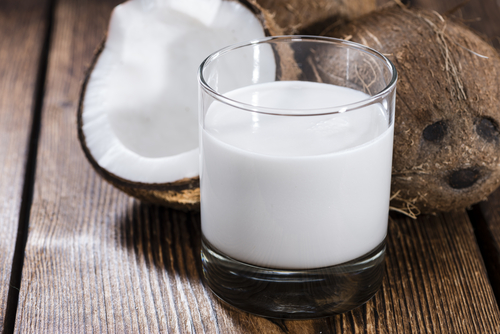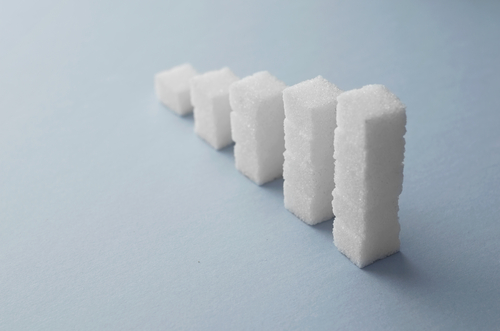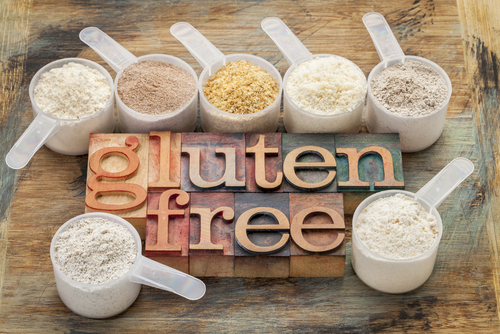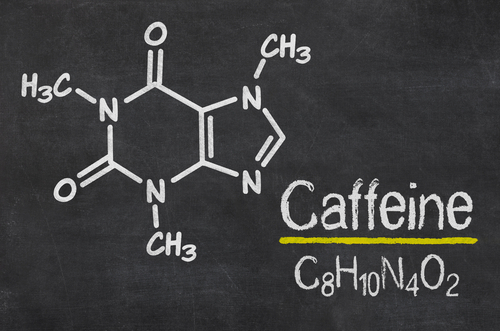![]()
Dr. Kantor was recently selected to be an exclusive panelist on Consumer Health Digest’s Expert Panel. You can read Dr. Kantor’s articles by clicking on his photograph at the beginning of the 7th row in the experts page, or by visiting his profile directly here.
NAMED is the only program that specifically targets the opiate receptors which cause the cravings of addiction. It also targets inflammation, created by acidosis(low PH)which causes large insulin fluctuations, resulting in sugar cravings and stimulating the opiate receptors. Specifically designed menus and stable alkaline water (Aqua OH-) are used to drastically reduce these symptoms. Basically all of these patients are in addiction or rehabilitation facilities where strong controls are very important.
The NAMED program also concentrates on Intensive Outpatient Treatment Programs. Patients in these programs go through a mandatory clinical and medical assessment to see if they are eligible. These patients do not stay in the facility, but spend a minimum of ten hours with therapists in small groups and individually. They are generally high caliber executives that cannot be gone for 30, 60 or ninety days but can manage their schedules for the ten hours of therapy, homework, study etc., and are extremely motivated. This program runs from eight weeks to 90 days. These patients have access to the same menus and alkaline water (Aqua OH-), plus exercises if needed and wanted.
NAMED found the perfect partner to run the Beta Test: Decision Point Wellness Center (www.dpwellnesscenter.com). The CEO, Mike Reis and the Chief Clinical Officer Jim Kennedy are tops in their fields and well respected. The initial reception was excellent and they have expanded their facility to about 4000 square feet, at 10700 State Bridge Road, #6 Johns Creek, Georgia 30022. They will continue to help lead the NAMED Program for Intensive Outpatient Treatment and have the exclusive rights to metro Atlanta.
Mike and Jim also added The Legacy Club to their facility and program. Dr. Kantor and NAMED will help make sure that snacks and drinks are healthy and do not stimulate the opiate receptors. The Legacy Club is a very high-tech sober bar where patients and friends can enjoy snacks, watch sports on a 110″ HDTV, play the high-tech video games, and use iPads and laptops (or have a business or social meeting in a safe, fun sober environment).
Another NAMED focus is on mental illnesses and disorders that are not directly related to drug or alcohol addiction – an area that NAMI considers extremely important! Examples include ADHD, Anxiety, Autism, Bi-Polar Disorder, Dementia, Alzheimer’s, Eating Disorders, PTSD, Schizophrenia, Sex Addiction, Sleep Disorders, and Substance abuse.
Here, except for substance abuse, NAMED menus do not concentrate on avoiding opiate receptor stimulation, but rather elimination of or limiting the chemicals in our diet that cause at least part of the problem. For example, if a male is considered extremely aggressive sexually, he has too much Testosterone. Formulating a menu that lowers it and it’s building blocks will lower the Testosterone in the body. Perhaps not enough to cure it, but in many cases it may be enough to lower medication dosage, and in all cases help to some degree. I can give dozens of examples but you get the concept.
Therapists generally have three main tools in their tool box: 1) talking, which is the most important, to try and pin point the problem and when this works, it is the home run; 2) medicating the patient, which is tricky since exact dosages are hard to get correct right away and drugs have side effects that need to be considered carefully; and 3) putting a patient in an institution as a very last resort.
NAMED now gives therapists a fourth, important and safe tool. In a small percentage of cases, it may get the patient off their medication with the therapist’s approval. In a larger percentage it may allow therapists to lower medicinal dosages, but most importantly, it will help patients in all cases…there are no side effects to eating healthy food. This is win/win for everyone.
The newest expansion of the NAMED Program covers all major diseases (heart disease, diabetes, high blood pressure, arthritis, etc.). This expansion was prompted when named was asked to lead the nutrition program of the Veteran’s Administration through Vet CV. They (the V.A.) needed to cover all diseases, not just substance abuse and mental illness.
INTRODUCTION
Nutrition and its effects on the body are often overlooked, underestimating the powerful effect that being properly nourished has on the overall metabolism, organ function and mental health. Those who are overcoming addiction will benefit from a precise nutrition plan that will keep the body functioning at its optimal level reducing symptoms and complications of addiction recovery.
A common problem in addiction recovery is the substance that one was addicted to is often replaced with food, typically junk foods, this is also known as “transfer addiction.” This leads to increased risk for obesity related diseases like Type 2 diabetes, high blood pressure, and heart disease. The surges and drops in blood sugars as a result of poor diet resemble the highs and lows of the actual substance that was once used [1] [2]. When overcoming addictions addressing the root causes of the addiction with a therapist while converting nutrition into a sound program that will allow the body to function will make a small but statistically significant impact on the overall success of the addiction and recovery program. Channeling the addictive behaviors into healthy lifestyle strategies like cooking, exercise, meditation, and healthy hobbies with the guidance of your therapist will generate long term success. 
Recovery from substance abuse also affects the body in other ways, including metabolism (processing energy), organ function, and mental well-being. Proper nutrition will help the healing process, repairing damaged tissue. Nutrients supply the body with energy. They provide substances to build and maintain healthy organs and fight off infection.
Nutrition also plays an important role in mood. Research suggests that changes in your diet can alter brain structure both chemically and physiologically, and influence your behavior. Furthermore, the consumption of certain foods has been tied to increased production of key neurotransmitters like serotonin, which improves mood [3]. Keeping mood stable will decrease the risk for cravings and relapse in addiction recovery.
SUBSTANCES AND NUTRITIONAL COMPLICATIONS
There are a variety of substances that individuals abuse and develop addictions to. It is important to understand how each type of drug effects the body, so areas of concern can be addressed specifically when it comes to nutrition.
Opiates (including codeine, OxyContin, heroin, and morphine) affect the gastrointestinal system. Constipation is a very common symptom of substance use. Symptoms that are common during withdrawal include, diarrhea, nausea and vomiting [4].
These symptoms may lead to a lack of nutrients and an imbalance of electrolytes (such as sodium, potassium, and chloride).
By drinking high quality electrolyte drinks like coconut water and or coconut milk can help replenish electrolytes without increasing sugar consumption, while eating balanced meals will have a small but statistically significant effect, helping patients withdrawal from addiction and will make these symptoms less severe (however, eating can be difficult, due to nausea). A high fiber diet with plenty of complex carbohydrates (such as whole grains, vegetables, peas, and beans) is also recommended. 
Alcoholism is one of the major causes of nutritional deficiency in the United States. Research has shown that at the height of their drinking, alcoholics often derive as much as 50 percent of their daily calorie allowance from alcohol itself, resulting in serious malnourishment. The most common deficiencies are B-vitamins, thiamine, and folic acid. A lack of these nutrients causes iron deficiency and neurological problems. Korsakoff’s syndrome (“wet brain”) occurs when heavy alcohol use causes a lack of enough thiamine [4,5].
Alcohol use also damages two major organs involved in metabolism and nutrition: the liver and the pancreas. The liver removes toxins and other harmful substances. The pancreas regulates blood sugar and the absorption of fat. Damage to these two organs results in an imbalance of fluids, calories, protein, and electrolytes.
Other complications include:
- Diabetes
- High blood pressure
- Permanent liver damage (or cirrhosis)
- Inability to process thoughts due to complications from cirrhosis
- Seizures
- Severe malnutrition
- Shortened life expectancy
Laboratory tests for protein, iron, and electrolytes may be needed to determine if there is liver disease in addition to the alcohol problem. Women who drink heavily are at high risk of osteoporosis and need to take calcium and vitamin D supplements. Following a diet rich in antioxidants, fiber and low in sugar, in addition to the recommended supplementation will have a small but statistically significant effect on helping patient’s withdrawal from addiction while reducing symptoms.
Stimulant use (such as crack, cocaine, and methamphetamine) reduces appetite, and leads to weight loss and poor nutrition. Users of these drugs may stay up for days at a time. They may be dehydrated and have electrolyte imbalances during these episodes along with long term damage to organs and metabolism. Returning to a normal diet can be hard if a person has lost a lot of weight.
Memory problems, which may be permanent, are a complication of long-term stimulant use.
Increasing nutrient and calorically dense food consumption slowly will improve nutrition status without excessive volume that could make patient uncomfortable in recovery. Nutrient and calorie dense foods include nuts, avocados, full fat dairy, nut butters, and oils.
Marijuana can increase appetite. Some long-term users may be overweight and need to cut back on fat, sugar, and total calories.
Body pH balance and its effects on our body’s ability to overcome addiction.
The typical American diet is packed with sugar and processed foods, which throws off your body’s ability to optimize your pH. Although your body naturally has it’s own mechanisms to buffer your pH, many of us are likely living in a state of low-grade acidosis from eating too many low-quality processed, depleted foods [6,7]. Eating a diet rich in low nutrient processed foods puts the body in a state of mild, moderate or even severe inflammation, inflammation can affect our body’s ability to regulate insulin levels resulting in increased cravings for sugary foods. In recovery, sugary food cravings can often be misread as a craving for the once abused substance due to similar hormonal responses of serotonin and opiate receptors. Optimizing our pH through a balanced and pure nutrition and hydration plan will reduce inflammation and help avoid cravings, hormonal imbalances and chances for relapses. Consuming at least 9-11 servings of fruits and vegetables, heart healthy fats, and high quality moderate sized protein servings along with hydration strategies in the form of high quality stable alkaline water (Aqua OH-) resources will have a small but statistically significant effect on helping patients withdrawal from addiction while reducing symptoms.
OPIATE RECEPTORS
Simple Carbohydrates/Sugar and Opiate Receptors 
Research on mice has shown that their body reacts to sugar through opiate receptor binding. The opiate receptors react to sugar just like it does to addicting substances like both drugs and alcohol which also increase the opiate receptor binding activity. Those who are regularly exposed to sugar tend to consume 30% more calories daily then those who eat a balanced diet that is not particularly high in sugar, this is measured specifically through opiate receptor binding [8]. Food sources of sugar are not limited to candy and desserts, simple carbohydrates like white breads, crackers, pastas, rice, and white potatoes are all fast acting carbohydrates that metabolize in the body similarly to sugary candies and desserts. Aim for more complex carbohydrate sources like quinoa, steel cut oats, sweet potatoes, wild or long cooking brown rice, sprouted grain breads, beans, flax seed, to name a few. Due to the higher fiber content of these complex carbohydrates the body breaks them down more slowly, resulting in more steady insulin levels and decreased cravings and opiate response. By not stimulating the opiate receptors, withdrawal is easier and the success rate is higher. Keeping this strategy, also lowers the chance of the addiction reoccurring.
Artificial Sweeteners and Opiate Receptors
Also avoid chemically based non-calorie sugar substitutes, these include, saccharin, aspartame, and sucralose. Non-calories sugar substitutes are typically found in drinks, and diet marketed foods like yogurts, nutrition bars, frozen meals and desserts. Although these sweeteners are not full of calories our brain still recognizes that there is something sweet inside of our body and it instinctively sends a signal to the pancreas to secrete insulin. There may not be as much of a dramatic secretion of insulin but there is still a fluctuation. This fluctuation will result in cravings once the insulin level drops from the initial spike. For recovery, reducing all cravings is the best strategy to keeping the metabolism and overall mental state stable. Studies have shown that artificial sweeteners can result in weight gain just as bad if not worse than regular sugar. In fact, the consumption of saccharin and aspartame regularly both cause greater weight gain than sugar, even when the total caloric intake remains similar [9]. Regular consumption of artificial sweeteners has also been linked to the development of Type 2 Diabetes, increased BMI (body mass index) in both children and adults and the neurological effects of increased hunger overall [10]. Again by not stimulating the opiate receptors, withdrawal is easier and the success rate is higher.
Gluten and Opiate Receptor Activity
Gluten has become a common intolerance both mild and more severe with those who suffer from Celiac Disease. Experts believe that the low nutrient over processed broken down wheat in our mainstream cooking flour has caused us to become intolerant to gluten resulting from compromised gut function. The gut and gastrointestinal system is the body’s dashboard for good health containing healthy bacteria that help keep unhealthy bacteria levels at bay. When the gut becomes compromised due to over exposure to antibiotics, food intolerances and other common toxins the physical lining of the gut becomes worn lowering healthy bacteria levels reducing our body’s ability to absorb key nutrients resulting in malnourishment and a compromised immune system with a constant state of inflammation. 
In reference to addiction, research has also revealed that gluten like sugar has a similar increased opiate receptor activity. The brain tissue in mice revealed an increase in opiate response specifically when gluten was consumed [11]. Even gluten free processed carbohydrates can stimulate the opiate receptor response, corn tortillas, gluten free cookies, breads, etc. Some gluten free substitutions are loaded with simple carbohydrates and syrups to offset the different taste compared to its gluten containing common food, but provides some of the negative metabolic effects. Strive to consume grains from naturally gluten free sources like long grain wild rice, quinoa, sweet potatoes, steel cut oats, etc. Eliminating processed sugar, and processed flours and preservatives that contain gluten will have a small but statistically significant effect on helping patients withdrawal from addiction while reducing symptoms and effects of their addiction. Not stimulating the opiate receptors is one of the keys to successful withdrawal and also lowers the relapse rate.
Milk Protein and Opiate Response
Some research also has shown that the consumption of milk and milk containing products will stimulate opioid response. Some have severe milk intolerances yet they consume multiple servings daily due to the opiate response and sacrifice by dealing with the uncomfortable side effects. Stimulating the opiate receptors increases the desire to consume the substance one is addicted to. This must be avoided for successful withdrawal.
Caffeine and Coffee with opiate response 
Consuming coffee has been shown to cause opiate receptor binding [12]. This further explains why most people who drink coffee drink it daily and if they consume more than 24 ounces daily they will have withdrawal symptoms from it. Coffee and caffeine can cause anxiety, auto immune pain disorders, inflammation, and sleep disturbances. Eliminating coffee and other caffeinated substances from the diet will help reduce the opiate response. Again, everything possible must be done to avoid stimulating the opiate receptors for successful withdrawal.
Suppressing the Opiate Response
Consuming a diet rich in nutrient dense palatable foods is the key to offsetting the negative effects of opiate receptors [13]. Feeling satisfied after consuming a meal that both appeared and tasted pleasant will offset the urge to “want more.” Unfortunately with all of the preservatives and unhealthy additives we think of palatable as unhealthy foods, reforming this mindset will allow foods to both increase the success of your recovery whiling allowing you to be healthy and have an optimal functioning metabolism. It is common among anyone who is trying to eat healthy, that the food at first will taste and appear bland due to the reduction in sodium, fat, and sugar and in most cases calories [14]. Using fresh herbs, spices, fruits, vegetables and healthy fats will improve the overall enjoyment of the foods leaving one feeling rewarded and satisfied not craving anything else. Suppressing the opiate response is a valuable key to successfully beating the addiction and maintaining this will lower the relapse rate.
Also in addition to amino acids therapy administration, consuming foods that are rich in amino acids like fish, meat, and poultry will not only help repair and regenerate damaged tissue, it will keep cravings down and help maintain lean muscle mass and proper organ function. Each meal should have an amino acids rich food like fish, meat, or poultry, and if needed a protein supplement [15].
Opiate Conclusion
Due to the overwhelming impact the opiate receptors have on overall mental health, and addiction behaviors, it can be concluded that consuming a diet that will reduce the opiate receptor response will increase the ease of withdrawal, increase the long term success rate in those in recovery for overcoming addiction and lower the relapse rate.
Sources
2. http://well.blogs.nytimes.com/2014/09/15/addiction-recovery-weight-gain-nutrition/?_r=1
3. http://www.webmd.com/food-recipes/how-food-affects-your-moods
4. http://www.nlm.nih.gov/medlineplus/ency/article/002149.htm
5. http://pubs.niaaa.nih.gov/publications/aa22.htm
6. http://www.ers.usda.gov/Publications/EIB33/EIB33.pdf
7. http://articles.mercola.com/sites/articles/archive/2010/09/11/alkaline-water-interview.aspx
8. http://www.tandfonline.com/doi/abs/10.1080/07315724.1989.10720272
9. http://www.sciencedirect.com/science/article/pii/S0195666312004138
10.http://www.ncbi.nlm.nih.gov/pmc/articles/PMC2892765/
11. http://www.ncbi.nlm.nih.gov/pubmed/6099562
12. http://www.nature.com/nature/journal/v301/n5897/abs/301246a0.html
13. http://www.ncbi.nlm.nih.gov/pubmed/23220294
14. http://www.addictionrecoveryguide.org/holistic/nutrition
15. Nutrition In Recovery by Margaret Soussloff, M.S. & Cara Zechello, R.D., Massachusetts Food Banks and Maria F. Bettencourt, MPH, Massachusetts Department of Public Health – See more at: http://alcoholicsvictorious.org/faq/rec-diet#sthash.arVGSzfm.dpuf
16. https://fitnesscrest.com/sugar-cravings/

